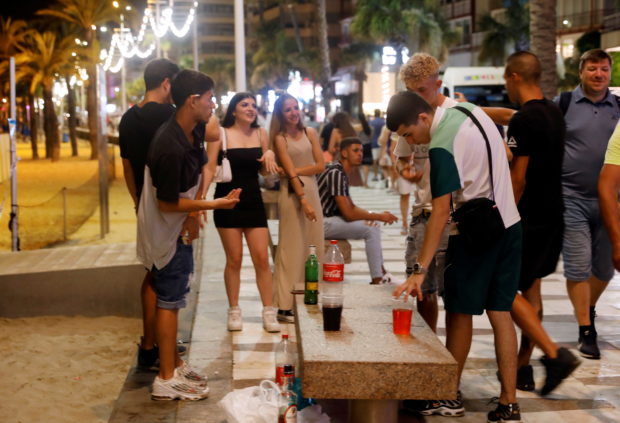
Youngsters party on Levante beach before closing for a night-time curfew which comes into effect tonight (01:00-06:00), as regional authorities in Valencia try to contain the rise of the coronavirus disease (COVID-19), in Benidorm, Spain July 25, 2021. REUTERS
MADRID — The number of new COVID-19 cases in Spain continued to increase on Monday, with the 14-day incidence rate reaching 700 infections per 100,000 inhabitants, but officials said the situation was improving in some of the hardest-hit areas.
The total number of cases in Spain reached 4.3 million amid the spread of the more contagious Delta variant, while deaths totaled 81,268, 47 more than in the last Health Ministry report released on Friday.
“It looks like we are starting to observe a deceleration in the incidence’s rhythm of growth,” deputy health minister Silvia Calzon told a news briefing, adding that more than 65% of new cases were among people below the age of 40 as Spain has prioritised vaccination by age groups.
Monday’s incidence rate was the highest registered in Spain since Feb. 5, according to an analysis of official data compiled by Europa Press news agency.
The northeastern region of Catalonia continued to have the highest incidence rate in the country – 1,145 cases per 100,000 people – but it was slightly lower than on Friday.
Catalonia has been one of the Spanish regions that recently reimposed a night curfew to try to curb the spread of the virus.
In a potential blow to the tourism-dependent country, Germany on Friday classified Spain as an area with a high incidence of coronavirus, meaning that unvaccinated travelers returning have to quarantine for at least five days.